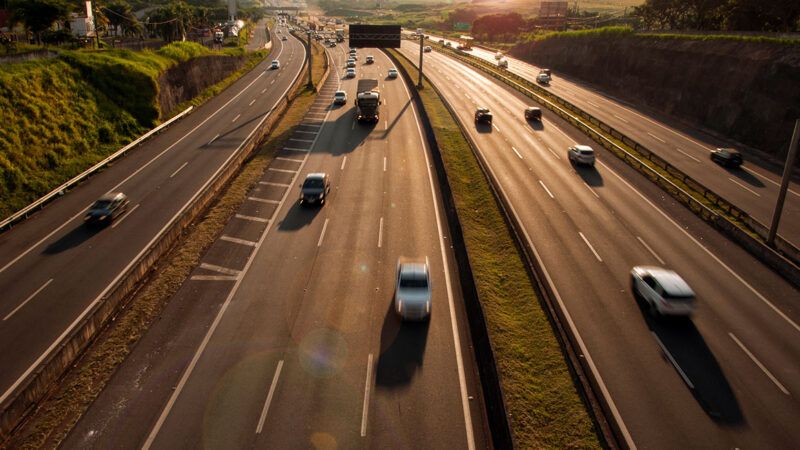Who Will Pay for the Roads?
Taxpayers will pay the tab for spruced-up bridges and rebuilt freeways, doubling down on a worrying trend.

The $1.2 trillion Infrastructure Investment and Jobs Act, which President Joe Biden signed into law in November, shifts federal highway policy further away from the free market model of "user pays, user benefits" by requiring taxpayers to cough up more money for socialized roads.
The infrastructure law, supported by legislators of both major parties, allocates about $54 billion a year to federally subsidized highways, which account for a quarter of all public roads in the U.S. That's an increase from the roughly $45 billion included in the last highway bill. All told, the law authorizes $110 billion in new spending on roads and bridges.
Where will all that money come from? Not from road users, at least not directly.
Biden's (unevenly honored) commitment to not raising taxes on people earning less than $400,000 a year ruled out an increase in the federal gasoline tax. His administration also quickly nixed tolls and mileage-based user fees.
Instead, the money will come from federal government's general fund. That means taxpayers and/or buyers of federal debt will pay the tab for spruced-up bridges and rebuilt freeways, doubling down on a worrying trend.
For decades, federal highway spending was covered completely by federal gas tax revenue. Fuel taxes are not exactly a user fee, but they do at least charge people who drive for the roads they drive on.
An even more market-oriented solution would involve giving private companies a larger role in building and maintaining highways and city streets while shifting the costs of those projects onto motorists, truckers, and other road users through tolls.
Since 2008, however, a gap between gas tax revenue and mounting federal transportation spending has required a $157 billion infusion from the general fund. Even before the 2021 infrastructure bill was passed, the Congressional Budget Office was projecting that the gap would grow.
The infrastructure package did include a few modest reforms. It created a pilot program to study a mileage-based user fee, and it expanded private activity bonds, which help private companies raise capital for infrastructure projects. But the overall trend is toward more freeloading freeways.
Rent Free is a weekly newsletter from Christian Britschgi on urbanism and the fight for less regulation, more housing, more property rights, and more freedom in America's cities.


Show Comments (250)